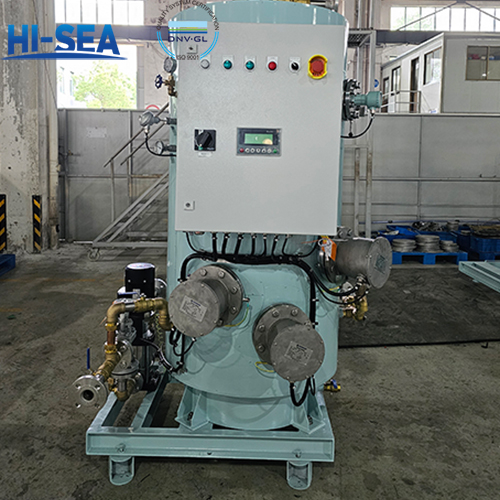
The Differences of Marine Calorifiers
Marine calorifiers are an important equipment on ships.
It is mainly used for storing and supplying hot water to meet the daily life and work needs of the crew on board.
Marine calorifiers are usually made of corrosion-resistant materials such as stainless steel and have good heat preservation performance to reduce heat loss and maintain the temperature of hot water.
The working principle is generally that through the ship's heating system, such as the utilization of waste heat from the main engine, fuel or electric heating, the water is heated and then stored in the calorifier.
On some larger ships, multiple calorifiers may be equipped to meet the hot water needs of different areas or different purposes.
This article will introduce to you the differences of different types of marine calorifiers to help you have a better understanding of them. So that you can handle the purchasing process with ease and choose the most suitable marine calorifier for you.
As a professional supplier of marine equipment, we have rich project experience and aim to provide you with excellent solutions. If you have relevant purchasing needs or questions, please contact us! Email <hs10@cqhisea.com>
Overview
Different types of marine calorifiers mainly have differences in the following aspects:
Heating methods:
Marine electric heating calorifier: Heats water by converting electrical energy into thermal energy. This type of calorifier is usually relatively simple to install and maintain, but it has certain requirements for the ship's power supply.
Marine steam heating calorifier: Utilizes the steam produced by the ship's steam system to heat water. It is more commonly applied on some large merchant ships or steam-powered ships because these ships themselves have steam generation systems and can fully utilize steam resources.
Marine electric and steam heating calorifier: Combines the electric heating system and the steam heating system, having the advantages of both and significantly improving the heating efficiency.
Capacity size:
Small marine calorifier: Has a smaller capacity and is suitable for ships with a smaller number of crew members, such as small fishing boats or speedboats.
Medium-sized marine calorifier: Can meet the daily hot water needs of medium-sized ships, such as medium-sized cargo ships or passenger ships.
Large marine calorifier: Has a larger capacity and is mainly used for ships with a large number of crew members and a large demand for hot water, such as large cruise ships and ocean-going cargo ships.
Material and structure:
Stainless steel marine calorifier: Has good corrosion resistance and strength and can be used for a long time in the humid marine environment.
Carbon steel marine calorifier: Has a relatively low cost but requires better anti-corrosion treatment.
Composite material marine calorifier: Combines the advantages of various materials, such as high strength, light weight, and corrosion resistance.
Thermal insulation performance:
High-quality thermal insulation marine calorifier: Adopts efficient thermal insulation materials and a good sealing structure, which can maintain the water temperature for a long time, reduce heat loss, and reduce energy consumption.
Ordinary thermal insulation marine calorifier: The thermal insulation effect is relatively weak and may require more frequent heating to maintain the water temperature.
Control methods:
Manual control marine calorifier: Requires manual operation to start and stop heating, adjust the water temperature, etc.
Automatic control marine calorifier: Can automatically start or stop heating according to the set water temperature, achieving more accurate temperature control and energy-saving operation.
Conclusion
The above is the entire content of this article. In the article, we have detailedly introduced to you The Differences of Marine Calorifiers. We hope that through this article, it can help you choose the marine calorifier.
Finally, if you have the need for procurement, you are welcome to visit our marine calorifier homepage or contact us at any time! Thank you again for your browsing!





